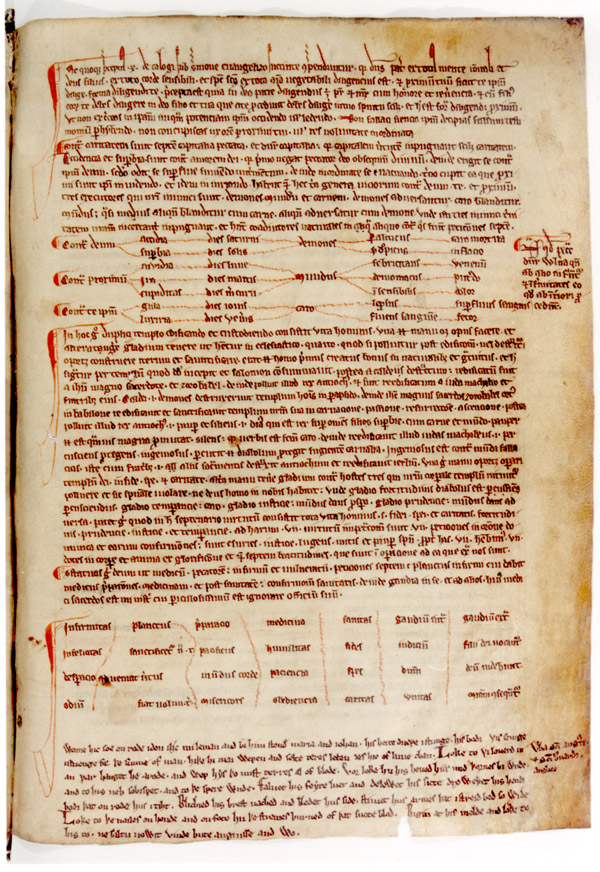
Description
of manuscript
Description:
Montague Rhodes James, A Descriptive Catalogue of the
Manuscripts in the Library of St John's College, Cambridge
(Cambridge: Cambridge University Press, 1913), pp. 19-21.
Parchment,
238mm x 180mm, fols. 143 + 19. The MS is a C15 compilation,
binding together a number of religious works copied at different
dates, from the 13th to the 15th century. On the flyleaf is a
'common profit' inscription: Liber quondam Magistri Nicholai
Kempston' A.d. 1477 nunquam vendendus secundum ultimam
uoluntatem defuncti sed libere occupandus a sacerdotibus
instructis ad predicandum uerbum dei ab uno sacerdote ad alterum
sine precio tradendus quamdiu durauerit ('This book, which
formerly belonged to Master Nicholas Kempston, AD 1477, is never
to be sold, according to the last will of the deceased, but to be
freely used by well-trained priests for preaching the word of God,
to be passed on without charge from one priest to the next as long
as it lasts').
James
describes the relevant MS section, II, as 'A single quire of cent.
xiii, finely written, 47 lines to a page.' It includes distinctiones,
which James suggests may be based on Robert Grosseteste's Templum
Dei; the poem, in a hand contemporary with that of the main
text, is at the foot of f. 72r. It is followed by a second Middle
English poem on the Passion, written continuously with it, Loke
to thi Louerd, man (ed. Brown
(1924), no. 2b, p. 4); this version of the poem (which also
survives in a shorter version, Brown
(1924), no. 2a, p. 3) draws on two Latin meditations, Respice
in faciem Christi (sometimes ascribed to St Bernard of
Clairvaux) and Candet nudatum pectus, ascribed in the
Middle Ages to St Augustine. A marginal note says, Verba S.
Augustini et S. Bernardi anglice ('Sayings of St Augustine and
St Bernard in English').

|
